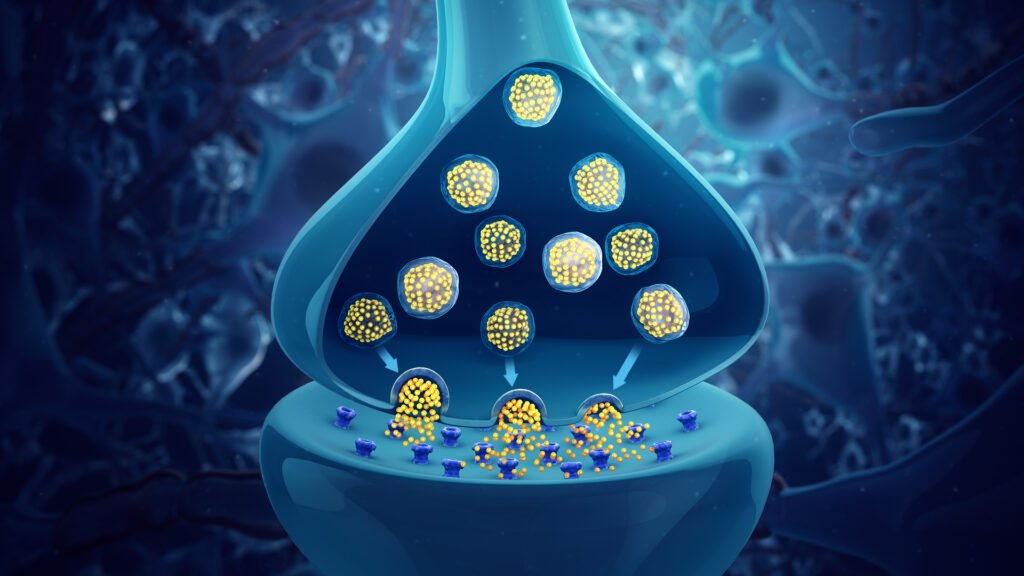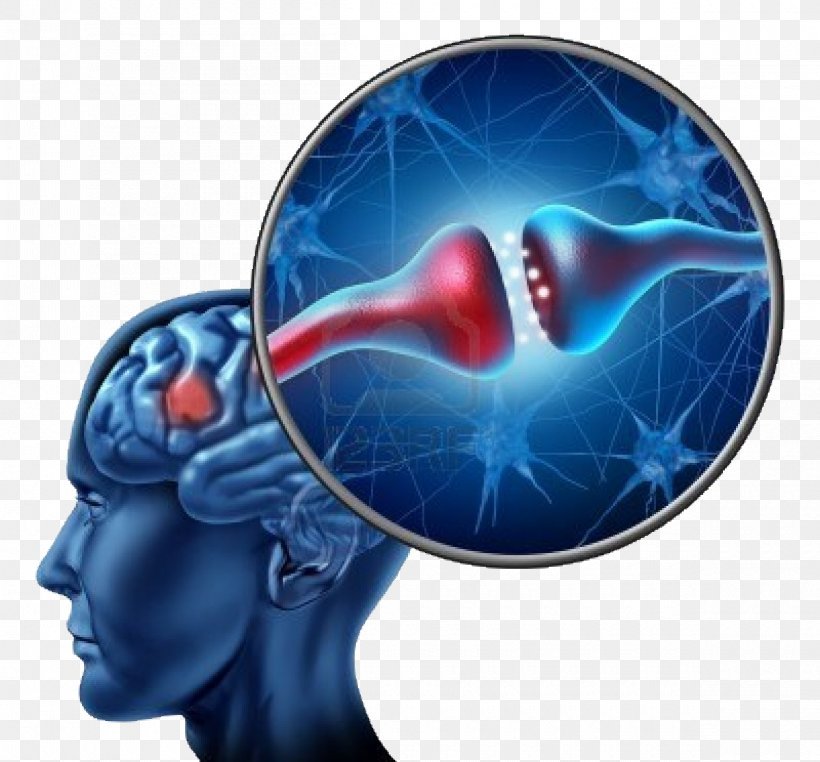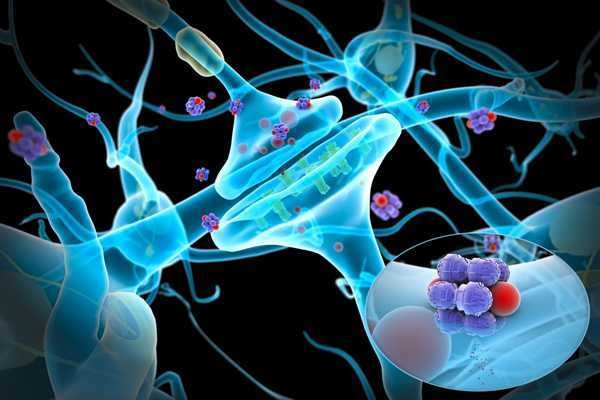What takes place when you deliver three scientists of numerous disciplines together, and provide them the sources of two of the country’s top lookup facilities? In this case, they find out a new cloth that might also assist scientists study greater about neurological disorders, and perchance take some huge steps towards brain-machine interfaces.

A new fabric developed with the aid of scientists from three distinctive disciplines can feel glutamate in the brain, and may also lead to new equipment to fight neurological disorders.
This pivotal discovery, making use of two person services at the U.S. Department of Energy’s Argonne National Laboratory, was once led by way of three scientists from Purdue University. Their fields of learn about are so disparate that besides this project, they may additionally in no way have collaborated. The effects of their mixed efforts — posted in Applied Materials and Interfaces, a journal of the American Chemical Society — ought to lead to breakthroughs in every of their disciplines.
“This has given us all new tools for collaboration, and allowed us to create higher equipment for reading the mechanism of neurological disorders.” — Hyowon Lee, assistant professor of biomedical engineering, Purdue University.
The three Purdue scientists at the helm of this lookup group — Shriram Ramanathan, professor of substances engineering; Hyowon “Hugh” Lee, assistant professor of biomedical engineering; and Alexander Chubykin, assistant professor of organic sciences — had been linked thru a Purdue initiative to convey scientists working on disparate thoughts together. Chubykin and Lee had been taking part on new methods to experience neurotransmitters in the brain, in search of substances that ought to hint these chemical substances with higher sensitivity and speed.
Unbeknownst to each of them, Ramanathan had been working on simply such a cloth for years, discovering doping strategies for perovskites, a semiconducting fabric additionally used in some different kinds of purposes such as photo voltaic cells and light-emitting diodes (LEDs), to be greater touchy to sure chemicals. This fabric — a perovskite nickelate lined with a nafion layer — became out to be simply what his colleagues have been seeking. Through a collection of tests, the crew found that this fabric is best for monitoring glutamate, a chemical that the brain’s nerve cells use to speak with different cells.
“Our talent units are so one of a kind that collaboration was once vital to take these sorts of substances into new areas,” stated Ramanathan.
Glutamate, one of the most ample amino acids in the body, is used by using each main Genius feature and is one of the important molecules the intelligence makes use of to ship and obtain statistics for manipulate of motor function, gaining knowledge of and remembering. Tracking its presence or absence in sure areas of the talent should lead to extra perception into autism and different disorders.
“Different varieties of autism create exclusive modifications to glutamate ranges in the brain, and appreciation them is important,” stated Chubykin. “Neural degeneration is marked by using a limit in glutamate. If we can measure that better, it will be very exciting.”

Several candidates for glutamate biosensors have been developed in the past, however this new cloth notably improves each the sensitivity stage and the response time. To recognize the composition and shape of the new material, crystals of it have been grown and analyzed at the Center for Nanoscale Materials (CNM), and X-ray evaluation of the cloth used to be carried out at the Advanced Photon Source (APS). Both CNM and APS are U.S. Department of Energy (DOE) Office of Science User Facilities at Argonne.
Ilke Arslan, the director of CNM, is a co-author on the paper. She and her group had been worried in characterizing the perovskite nickelate skinny videos of this fabric through imaging them at the atomic scale the use of CNM’s effective electron microscopes.
“This interdisciplinary collaboration is a notable demonstration of how substances science and characterization at the atomic scale can hyperlink with biomedical engineering and neuroscience to lead to new breakthroughs that will advantage humankind,” Arslan said.
X-ray measurements have been carried out on two APS beamlines: 33-ID-D and 29-ID-D, each operated via Argonne’s X-ray Science Division (XSD). The effective X-rays of the APS allowed for specific imaging of the reactions inside the fabric to the presence of a variety of doses of glutamate.
Fanny Rodolakis, an XSD physicist, labored with the Purdue crew at 29-ID-D. She stated she has been working with Ramanathan for about a year, and is interested via the purposes for the substances he brings to the APS.
“They comprehend their samples very properly and are capable to completely represent their macroscopic properties, however they don’t have the equipment to seem to be at them on a microscopic, quantum level,” Rodolakis said. “You want a mild supply like the APS, so you can tune the electricity of the X-ray beams to see how the chemical remedies have an effect on the fabric on this level. They have the best samples, and we have the ideal massive toolbox to assist them.”
The glutamate-sensing houses of this cloth had been examined in intelligence slices, however the most vital check used to be with stay mice — what scientists refer to as in vivo, or carried out in a residing organism.
“We want approaches to recognize the intelligence whilst it is alive, due to the fact our regular characterization includes searching at intelligence slices post-mortem,” Arslan said.

In Chubykin’s lab at Purdue, the new fabric used to be implanted into the visible cortex of a mouse below anesthesia, and when the mouse awoke, scientists had been capable to music its responses to visible stimuli.
“We confirmed the mouse pictures,” Lee explained. “We confirmed it a checkerboard pattern, traces and bars, pictures that the intelligence responds to most.”
The effects confirmed accelerated sensitivity and quicker response time than different glutamate-sensing materials. The subsequent step, Ramanathan said, is to create smaller microneedles to song glutamate in precise sections of the brain, working with greater unique stimuli. This, he said, opens up extra chances to experience one-of-a-kind sorts of neurotransmitters.
For Ramanathan, this fabric is additionally a step towards machines that can interface with the human Genius and perhaps examine and react to sensory information. He calls this the holy grail of neural links.
With such promising results, this group intends to maintain its affiliation going.
“That’s the splendor of this effort,” Lee said. “I had no thinking about the existence of this kind of material. This has given us all new equipment for collaboration and allowed us to create higher equipment for reading the mechanism of neurological disorders.”


